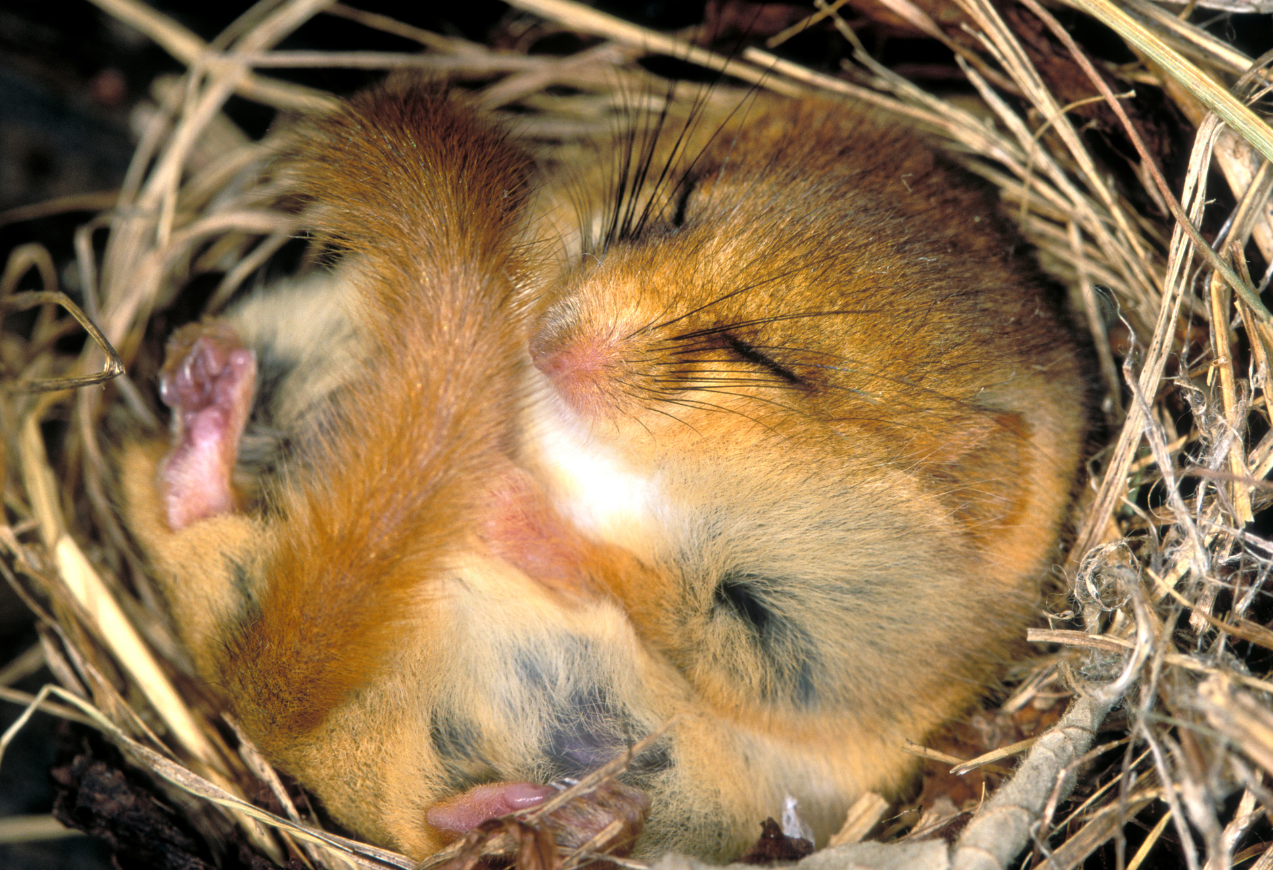
Dormancy
by Molly Robertson, Program Director
When temperatures drop and food becomes scarce, some of Connecticut’s wildlife enter into a state of dormancy. Dormancy is an adaptation to help an animal survive the harsh conditions of winter. Dormancy means that the animal's bodily functions slow down or stop, but not all dormancy is hibernation! True hibernators must meet three characteristics: reduced energy/metabolism requirements, slowed heart rate, and dramatically lowered body temperature.
Connecticut has three “true” hibernators: the jumping mouse, some species of bat, and groundhogs. But wait, you might be thinking, what about bears? Bears do experience dormancy during winter as they do not eat, drink, or defecate and their heart rate drops from 80-90 beats per minute (bpm) to 8 bpm. However, bears do not meet the characteristics of a “true” hibernator as their body temperature, because of their thick layer of fat and fur, does not drop significantly. Alternatively, the temperature of a jumping mouse will drop from 99 degrees when awake to 34 degrees during hibernation. Similarly, the groundhogs' heartbeat slows from 80 bpm to 5 and their body temperature drops from 99 degrees to 33 degrees in hibernation
In torpor, another state of dormancy, the heart rate and metabolism are reduced but it is for shorter periods of time and the body’s temperature does not fall significantly. Torpor is an involuntary response to cold. Animals can enter and exit torpor many times a day. Chipmunks, raccoons, and skunks alike enter a state of torpor where they will occasionally wake to eat and move.
Brumation is hibernation for ectotherms or cold-blooded animals. In brumation, reptiles and amphibians enter an extended hibernation where their body temperature matches their surroundings, and they do not move, eat or drink for many months. A simple way to understand this is to imagine a reptile or amphibian 'shutting down' during the winter, much like a computer in sleep mode. Connecticut's wood frog, for example, can completely stop all bodily functions and freeze solid. When temperatures warm up, the wood frog's body will remarkably restart circulation without any damage to the wood frog's cells. This is an astonishing example of how incredible nature can be!

